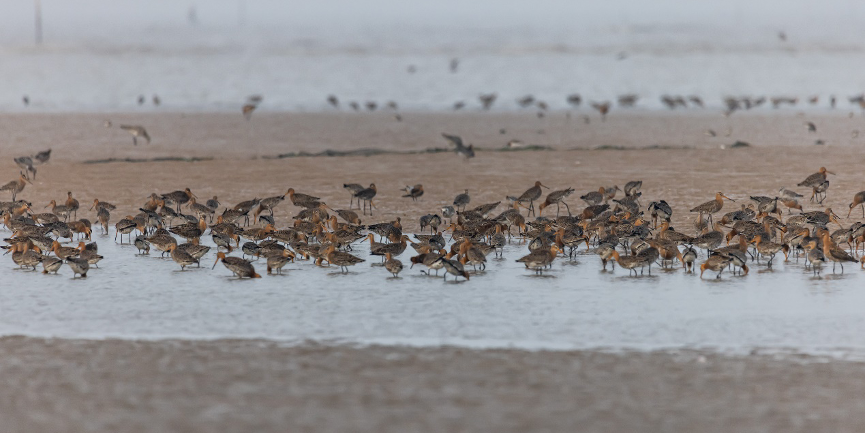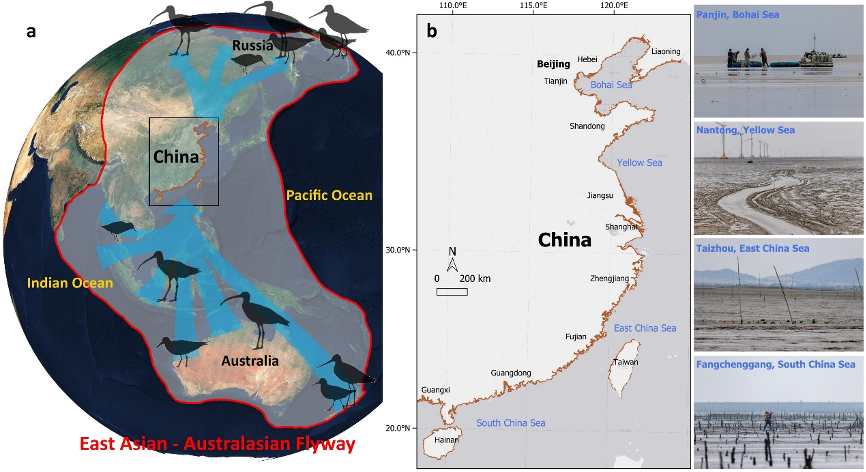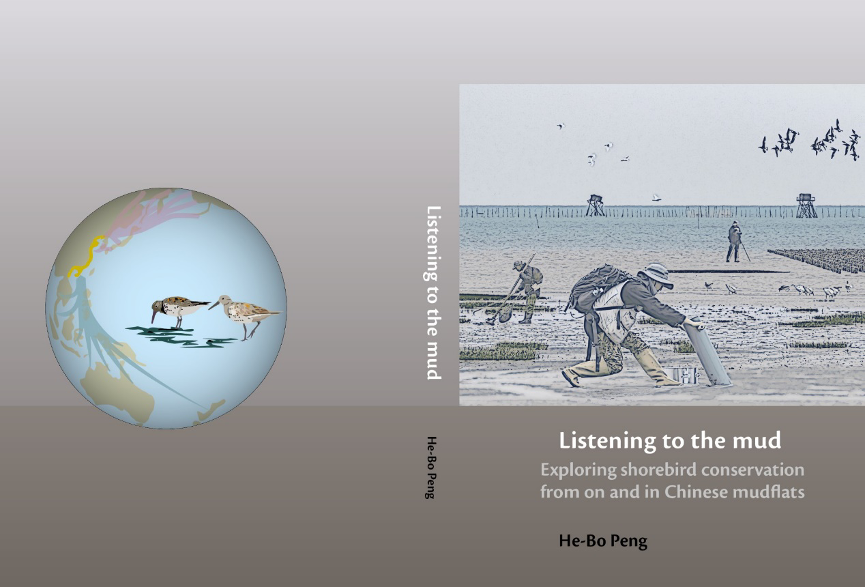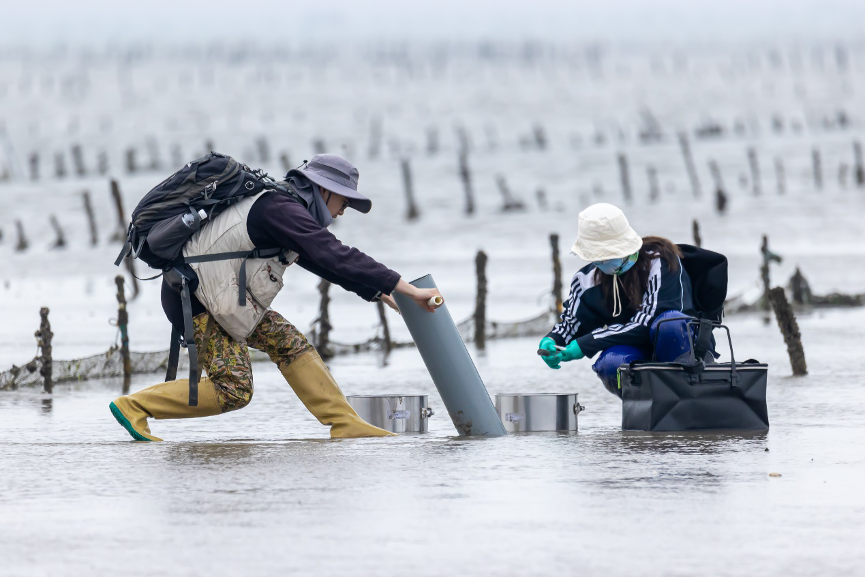by He-Bo Peng
The East Asian-Australasian Flyway (EAAF) is the flyway with the greatest diversity of migratory shorebirds globally. At the same time, it’s also a flyway where many populations show important declines. Habitat loss along the coast of the Yellow Sea (especially the Chinese coast), which was the most important staging area for shorebirds in the EAAF, was considered to be the main cause of these declines. But while habitat loss has been stopped or even reversed since 2013, survival rates and population sizes of shorebirds are still showing a downward trend. To understand how changes in China’s intertidal mudflats are affecting shorebirds, I studied the most basic factors that may be affecting the birds’ survival – food! More specifically, I explored the biodiversity and distribution of molluscs (main food for most shorebirds in China) along the Chinese coast.
In the EAAF, there is only limited research on the prey species of shorebirds, especially along the coast of China, where studies so far focused on two sites (Yalu Jiang and Nanpu). Of particular interest is the impact of mollusc aquaculture, which is widespread along the Chinese coast, while its impacts on shorebird food availability are barely known.

Since 2015, I have been conducting macrobenthic and shorebid surveys across 20 latitudes along the Chinese coast, covering over 35 important stopover sites. In so doing, I found that the aquacultural mollusc species dominated and homogenised the mollusc communities. Moreover, I found that the distribution of the shorebirds was highly correlated with the distribution of aquaculture molluscs.

Using satellite tracking I was able to look at the effects of changes in the macrobenthos on the utilisation of sites, refuelling, movements and survival rate of migratory shorebirds. Combined with other methods this revealed that survival rates of the birds were still declining, and that individuals that arrived late and that were lean showed the highest annual mortality. Interestingly, the spatial overlap between individuals was lowest in the year that food was scarce. Birds adjust to changes in intertidal food availability by altering their diet, the degree to which they aggregate with other individuals, the timing of their migration, and choosing alternate sites, among other things. The availability of a continuum of high quality stopover sites along the Chinese coast seems key for shorebirds to cope with sudden food changes in any single habitat.

Overall, by listening closely to the mudflats from 2015 to 2023, I was able to better understand the distribution and changes in macrobenthos, which in turn have an important impact on the survival of shorebirds. By combining traditional bird surveys, colour-banding, and satellite (and radio) tracking, it was possible to explroe the impacts of intertidal aquaculture on shorebirds along the coast of China, and to show how shorebirds adapt to stopover sites with rapidly changing food conditions.
All these studies were assembled into my PhD thesis.




